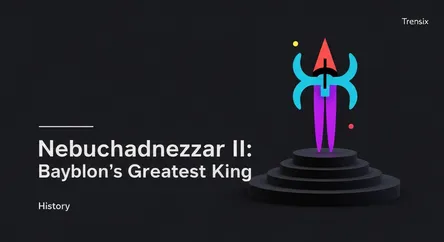History
Nebuchadnezzar II: Babylon's Greatest King

Explore the reign of Nebuchadnezzar II, the powerful Babylonian king known for his vast conquests and monumental building projects like the Hanging Gardens.
What is it?
Nebuchadnezzar II (c. 634 – 562 BCE) was the second and most powerful monarch of the Neo-Babylonian Empire. Reigning from approximately 605 to 562 BCE, he is regarded as the empire's greatest king, known for his military prowess and ambitious architectural projects. He succeeded his father, Nabopolassar, who had liberated Babylonia from Assyrian rule. Nebuchadnezzar's 43-year reign marked the zenith of Babylonian power and culture. He expanded his empire by conquering Syria and Palestine and is famously credited with constructing the Hanging Gardens of Babylon, one of the Seven Wonders of the Ancient World, along with the iconic Ishtar Gate.
Why is it trending?
Nebuchadnezzar II remains a figure of immense historical interest due to his significant impact on the ancient world and his prominent role in religious texts. His military campaigns are legendary, particularly the siege and destruction of Jerusalem in 586 BCE, which resulted in the Babylonian Captivity of the Jews. This event made him a key, often notorious, figure in the Bible, especially in the books of Jeremiah and Daniel. His grand building projects in Babylon, which transformed it into a wonder of the ancient world, continue to captivate historians and archaeologists. Ongoing archaeological work in the region and new analyses of ancient texts keep his story relevant.
How does it affect people?
Nebuchadnezzar II's actions had a profound and lasting impact on history, particularly for Jewish people. The destruction of Solomon's Temple and the subsequent Babylonian Captivity were transformative events in Judaism, shaping its religious and cultural identity for millennia. His architectural legacy, though largely in ruins, influenced subsequent civilizations and fuels the modern imagination about the grandeur of ancient Mesopotamia. For many, he represents the archetype of a powerful, ambitious, and sometimes ruthless ruler whose legacy is a complex mixture of monumental creation and brutal conquest, serving as a subject of study in history, theology, and leadership.